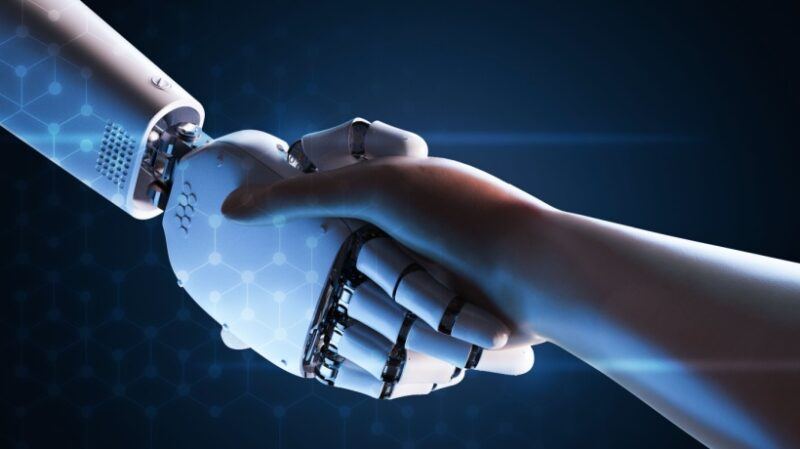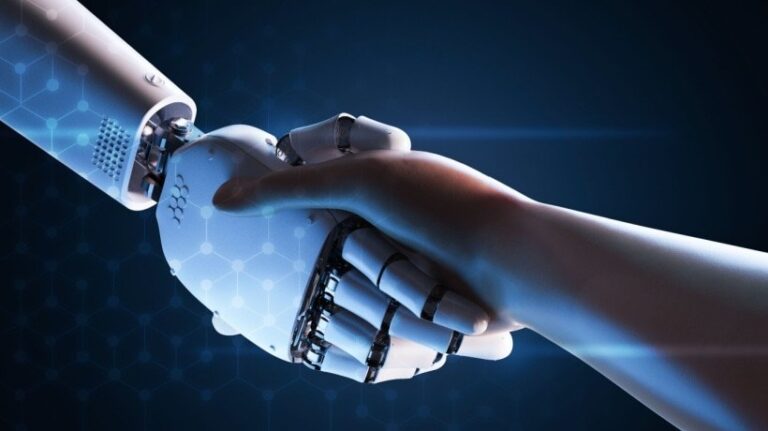
Will AI replace teachers?
Every teacher wants to be in the classroom and instead of spending hours preparing lesson plans, grade assignments, and answering repetitive emails, they have someone else handle these tasks. Well, this is quickly becoming a reality for teachers thanks to AI. Artificial intelligence has entered classrooms all over the world to help them work more efficiently, not as a substitute for teachers but as a support. The idea of AI in education may be of concern to those who fear it will take over human roles, but the truth is quite the opposite. AI is not here to replace teachers, but to empower them if used responsibly.
AI can become the ultimate teaching assistant. It doesn’t get tired, you can work 24/7, helping you with the most boring tasks and helping your teacher interact, inspire and succeed with your students. So, when we explore the role of AI in education, let’s look at why teachers are not replaced by AI, but are supported as never before.
Five ways AI is a teacher collaborator
1. Handling recurring tasks
Classes include hours of grading, planning, and repetitive tasks that take up much of a busy teacher’s schedule. This is where AI intervene to become the teacher’s best friend. Grading takes time, especially for large classes. AI-powered grading tools allow you to instantly view multiple choice and short-term questions and provide instant feedback to students. Not only does this save time at work, it also helps students understand mistakes quickly, rather than waiting for results. Some platforms analyze patterns of student responses, indicating common mistakes, so teachers can adjust lessons accordingly. Additionally, there are administrative tasks that teachers must take care of, such as responding to emails, tracking student progress, and organizing schedules. AI can help you answer automated email responses and frequently asked questions about homework, deadlines, or class policies.
2. Improve training efficiency
Instead of spending time researching and organizing teaching materials, teachers can use AI to work, leaving them with more time to focus on important tasks. Many AI tools allow you to create lesson plans with goals and activities tailored to different grade levels and subjects. Simply enter a topic and these tools create a well-organized plan in seconds. Teachers can also tailor AI-generated content to their own teaching style. Beyond lesson plans, AI also generates quizzes adapted to student performance, ensuring learners are able to get the right level of challenge. Plus, you can create interactive videos, simulations, and even gaming content to make learning more engaging. Of course, the materials produced in AI are not perfect. Teachers should review the content to ensure that the content is consistent with the learning goals or is accurate enough to deliver.
3. Filling the resource gap
In many schools, teachers manage large classrooms with limited resources, making it difficult to provide the necessary attention to all students. Thankfully, AI is an additional set of hands to fill these resource gaps and support both teachers and students. For example, classrooms with 40 students and one teacher have a quick grasp of some concepts, but it is inevitable that other teachers need additional help. Traditionally, teachers tried to balance time between different students. However, with AI-powered tools, each learner can receive instant support without waiting for teachers to become available. Specifically, the AI tutor system provides real-time explanations, answers student questions and generates additional practice exercises based on student needs. In schools with fewer teachers and outdated materials, AI can help by generating fresh content such as videos and interactive exercises. AI cannot replace human connection, creativity, or adaptability of teachers, but when resources are limited, it is a lifesaver.
4. Provide real-time class management
No more guessing which students are struggling or freeing. With AI quietly working in the background, it’s easier than ever for teachers to track student engagement in real time and check out who need additional help. Teachers now have a lot of data, and AI-powered classroom analysis allows them to analyze student performance over time, detect patterns, and make suggestions on the spot. Thus, all teachers can provide targeted support before students are too late. However, AI can not only identify issues, but also improve collaboration. By analyzing the pros and cons, AI groups students for peer learning, allowing students who complement each other’s abilities to work together to boost teamwork and lead to better outcomes.
5. Personalizing your learning
As mentioned above, AI-powered systems track student progress in real time and spot patterns that teachers may not notice immediately. If students are consistently struggling with concepts, AI can note this and suggest adjustments to allow teachers to provide more help. This is the key to personalized learning. While traditional classrooms follow a general approach, AI can recommend personalized learning paths based on each student’s pace and understanding. For example, if a student is really good at the subject and moves through the course faster, AI can propose more challenging materials to suggest more challenging materials. Similarly, AI can also accurately find knowledge gaps. This means students practice precisely where they need it. This is especially useful before the exam.
Issues related to AI and human education
Data Privacy
One of the first concerns about AI in education is data privacy. Many AI-powered platforms collect student data to personalize the learning experience, which raises important questions about how secure the data is. To address this, schools must follow strict privacy policies and prioritize regulations-compliant AI tools such as GDPR (Europe) and FERPA (USA). Teachers must also be aware of the data permissions granted to AI tools. Just because the app promises to make the job easier doesn’t mean you need unlimited access to student records.
Learning curve
Some teachers can easily navigate AI tools, but some teachers struggle even with basic techniques. The learning curve of AI adoption is a real problem, and AI cannot help them if teachers are not properly trained. Therefore, schools need to provide practical and practical training, so teachers will understand how to use AI without being overwhelmed. However, this training is not just about using tools. It also needs to cover critical thinking about AI. Teachers need to know how to evaluate AI-generated content, detect bias, and decide when to trust it and when to intervene.
Excessive dependence
AI can take over many tasks, but if teachers rely too much on them, they can lose their personal touch. Great education isn’t just about providing content. It involves building relationships with students and adapting lessons on the spot. AI may be able to create the perfect lesson plan, but it is not possible to read or adjust facial expressions based on students’ emotions and involvement. Therefore, teachers should use AI as a tool only to increase their creativity and use it rather than replace it.
Misreport
One of the biggest drawbacks of AI is that it sometimes gets wrong. AI models get data from millions of sources, but don’t really understand what they generate. In other words, lesson materials created by AI may contain outdated information, bias, or completely false facts. Therefore, when using AI, fact checking is non-negotiable and teachers should always review and deliver content generated by AI.
Conclusion
After all, AI is not here to take over the classroom. It’s here to help. Teachers should see AI as an assistant who handles repetitive tasks. This will allow students to focus on inspiring and teaching them. AI is extremely efficient, personalised and can provide data-driven insights, but it cannot replace the human creativity and critical thinking that teachers bring to education. The key is to use AI strategically and always have control over it.
Workbright
Workbright streamlines your form collection and brings new team members to work with a fast, compliant, 100% remote process.


